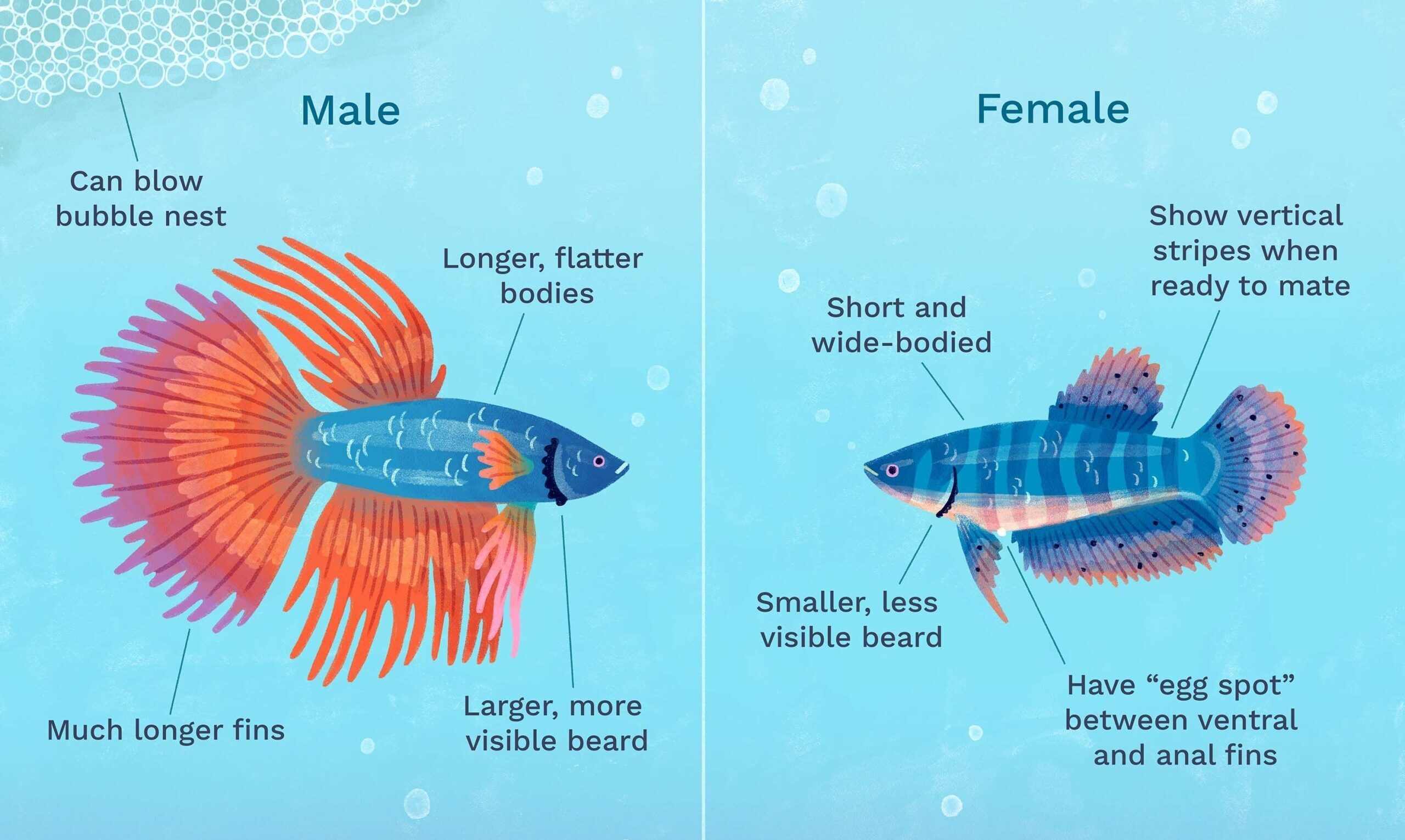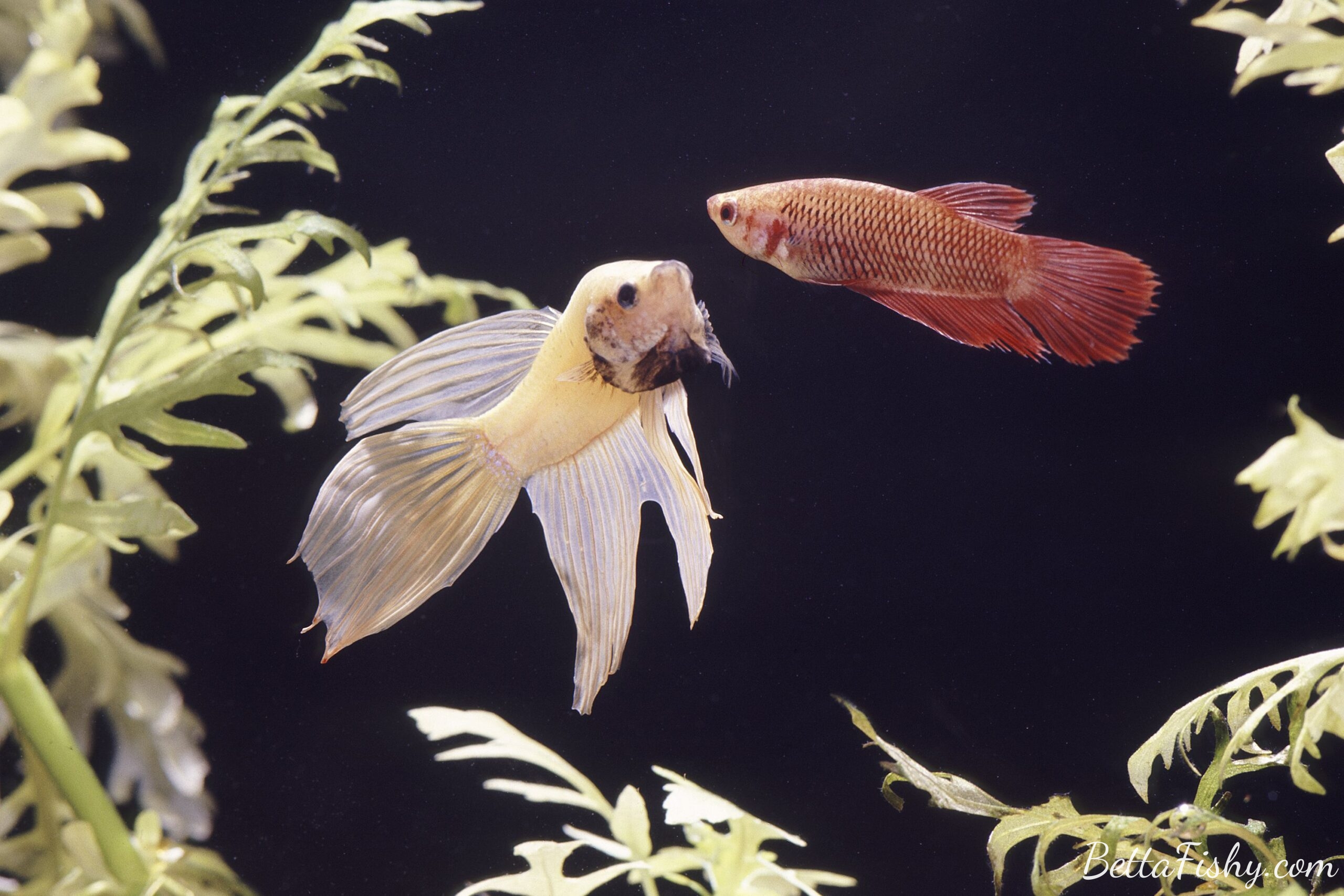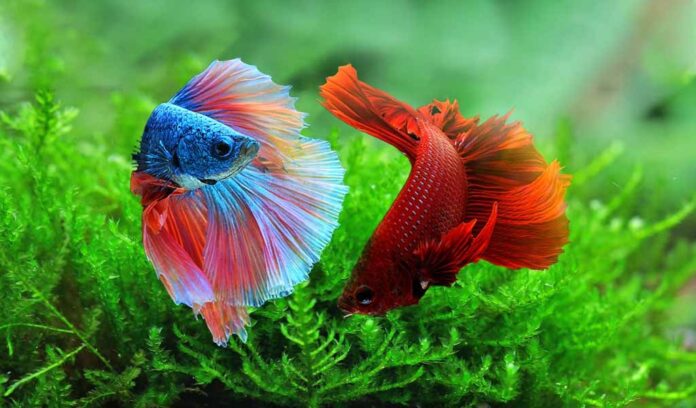The Betta fish, also known as the Siamese Fighting Fish, is a popular freshwater fish known for its vibrant colors and flowing fins. However, amidst their beauty lie distinct differences between male vs female betta fish. Understanding these distinctions is crucial for providing optimal care and appreciating the unique characteristics of each sex. In this article, we will delve into the physical, behavioral, and care differences between male vs female Betta fish, as well as additional considerations for owning these stunning creatures.
Unveiling the Distinctive Physical Traits of Male Vs Female Bettas
Coloration
Male Bettas typically boast a wider array of colors, often showcasing metallic hues like blue, red, green, and yellow. Their patterns can be intricate and mesmerizing, featuring stripes, spots, and marbling. In contrast, female Bettas tend to exhibit less vibrant colors, with shades of brown, beige, and grey being more common. This difference in coloration is due to the presence of pigments called carotenoids, which are responsible for producing bright colors in male Bettas. Female Bettas, on the other hand, have a lower concentration of these pigments, resulting in their muted appearance.
Size
Another physical difference between male and female Bettas is their size. Male Bettas are generally larger than their female counterparts, reaching around 2.5 inches in length. Females, on the other hand, typically reach around 2 inches. This size difference is most noticeable in the body and fins of male Bettas, which are longer and more elongated compared to females. However, it is important to note that there can be variations in size within each sex, depending on genetics, diet, and overall health.
Fins
One of the most noticeable physical differences between male and female Betta fish lies in their fins. Male Bettas possess long, flowing fins, especially the caudal (tail) fin, which can be fan-shaped, double-tailed, or veil-tailed. These fins are used for display and courtship rituals, as well as for swimming and maneuvering through the water. In contrast, female Bettas have shorter and rounder fins, making them less flashy but more efficient swimmers. The shape and length of the fins also play a role in determining the sex of a Betta fish, with males having more pointed and elongated fins compared to females.
In addition to color, male Bettas also have longer and more elaborate fins compared to females. This is because male Bettas use their fins to attract potential mates and display dominance over other males. The vibrant colors and flowing fins of male Bettas make them stand out in the wild, making it easier for females to spot them and choose a suitable mate.
Body Shape
Male Bettas have a more slender and elongated body shape compared to females. This is due to their need for speed and agility when competing for mates and defending their territory. In contrast, female Bettas have a rounder and plumper body shape, which is better suited for carrying and protecting eggs during breeding. Additionally, as male Bettas mature, they may develop a beard near their gills, known as a “beard” or “beard growth.” This is a distinguishing feature of male Bettas and is used to intimidate other males during fights.

Understanding the Unique Actions and Reactions of Male Vs Female Betta Fish
Aggression
One of the most significant behavioral differences between male and female Betta fish is their level of aggression. Male Bettas are notoriously known for their aggressive nature, especially towards other males. In the wild, male Bettas will fight to defend their territory and attract females for breeding. This behavior is also observed in captivity, where male Bettas may become aggressive towards other fish, including females. Therefore, it is essential to keep male Bettas in separate tanks to prevent any potential fights and injuries.
On the other hand, female Bettas are generally less aggressive and can coexist peacefully with other fish. However, they may display aggression towards other females when kept in small spaces or during breeding. It is recommended to have a larger tank with plenty of hiding spots for female Bettas to reduce any potential aggression.
Bubble Nesting
Another interesting behavior exhibited by male Bettas is bubble nesting. Male Bettas build bubble nests on the surface of the water using air bubbles and saliva. These nests serve as a place for the male to protect and care for the eggs during breeding. This behavior is not seen in female Bettas, as they do not play a role in caring for the eggs. Bubble nesting is an instinctual behavior in male Bettas and is triggered by the presence of a female or changes in water conditions.
Activity Level
Male and female Betta fish also differ in their activity levels. Male Bettas tend to be more active and energetic, constantly swimming around and exploring their surroundings. This is due to their territorial nature and need to patrol their territory. In contrast, female Bettas are generally more docile and spend more time resting near the bottom of the tank. This difference in activity level is also influenced by the size and type of tank, as well as the presence of other fish.

Addressing the Different Care Needs of Male and Female Bettas
Tank Size
When it comes to caring for male and female Betta fish, there are some differences in tank size requirements. Male Bettas require a larger tank compared to females, as they need more space to swim and establish their territory. A minimum tank size of 5 gallons is recommended for male Bettas, while females can thrive in a tank as small as 2.5 gallons. It is important to note that these are minimum recommendations, and providing a larger tank for both male and female Bettas is always better for their overall health and well-being.
Feeding Needs
In terms of feeding, male and female Betta fish have similar dietary requirements. Both sexes are carnivorous and should be fed a high-quality pellet or flake food specifically designed for Betta fish. However, male Bettas may require more frequent feedings due to their higher activity level and metabolism. It is recommended to feed adult Bettas twice a day, while young Bettas may need three meals a day. Overfeeding can lead to health issues, so it is essential to monitor the amount of food given to your Betta fish.
Water Parameters
Betta fish are sensitive to changes in water parameters, and it is crucial to maintain a clean and stable environment for their well-being. Male and female Bettas have similar water parameter requirements, with a pH range of 6.5-7.5 and a temperature range of 76-82°F. However, male Bettas may be more sensitive to poor water quality due to their higher activity level and territorial behavior. Therefore, regular water changes and proper filtration are essential for both male and female Bettas.

Additional Considerations When Choosing Your Betta Companion
Breeding
Breeding Betta fish is a complex process that requires careful planning and preparation. While both male and female Bettas can breed, it is essential to understand their unique roles in the breeding process. Male Bettas are responsible for building the bubble nest, attracting a female, and caring for the eggs until they hatch. Female Bettas, on the other hand, are responsible for laying the eggs and guarding them until they hatch. It is crucial to provide a suitable breeding environment and closely monitor the breeding pair to ensure their safety and the success of the breeding process.
Compatibility
When it comes to tank mates, male and female Betta fish have different levels of compatibility. Male Bettas are highly territorial and may become aggressive towards other fish, especially those with long, flowing fins that resemble their own. Therefore, it is recommended to keep male Bettas in a tank by themselves or with peaceful, non-finned fish like snails or shrimp. Female Bettas, on the other hand, can coexist peacefully with other fish, including other female Bettas. However, it is essential to monitor their behavior and provide enough space and hiding spots to reduce any potential aggression.
Personal Preference
Lastly, when deciding between a male or female Betta fish, personal preference also plays a role. Some people may prefer the vibrant colors and elaborate fins of male Bettas, while others may appreciate the subtle beauty of female Bettas. It is important to remember that each Betta fish, regardless of sex, has its unique personality and characteristics. Therefore, it is essential to choose a Betta fish based on your personal preferences and not solely on their physical appearance.

Reaching Your Final Decision and Embracing the Betta Journey
In conclusion, male and female Betta fish may share the same species, but they have distinct differences that make them unique. From their physical appearance to their behaviors and care requirements, understanding these differences is crucial for providing optimal care and appreciation for these stunning creatures. Whether you choose a male or female Betta fish, both sexes are equally fascinating and make wonderful pets for any fish enthusiast. So next time you admire a Betta fish, take a moment to appreciate the secrets hidden beneath their beautiful exterior.


